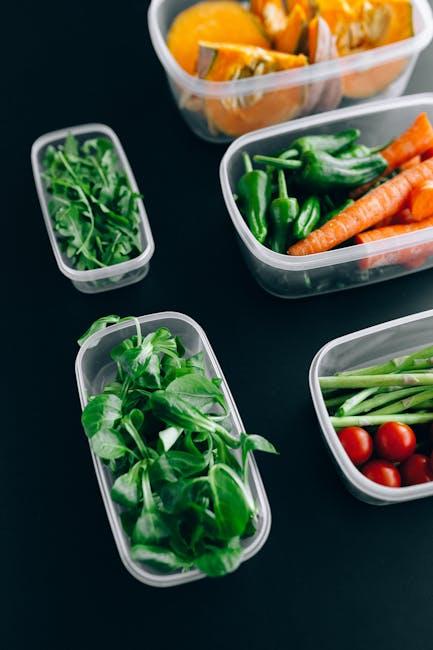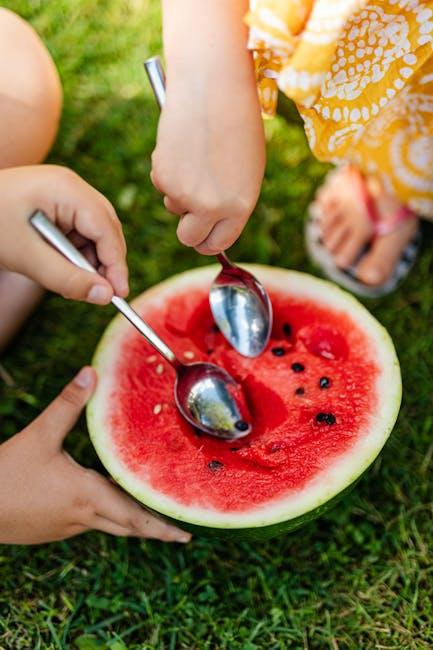In the quest for nurturing their children’s health, many parents find themselves exploring diets that promise more than just balanced meals—diets that aim to heal from within. The GAPS Diet, short for Gut and Psychology Syndrome, has gained attention as a potential avenue for supporting children’s digestive health and overall well-being. Rooted in the belief that a healthy gut can influence behavior, mood, and immunity, this diet invites families to rethink the way they approach nutrition and healing. But what exactly does the GAPS Diet involve, and is it suitable for every child? In this article, we’ll take a closer look at what parents should know before embarking on this dietary journey with their children.
Table of Contents
- Understanding the GAPS Diet and Its Benefits for Children
- Identifying Signs That GAPS Diet May Help Your Child
- Essential Foods to Include and Avoid on the GAPS Diet
- Practical Tips for Introducing the GAPS Diet at Home
- Monitoring Progress and When to Seek Professional Guidance
- Q&A
- Wrapping Up

Understanding the GAPS Diet and Its Benefits for Children
Developed to address gut health challenges, the GAPS Diet revolves around healing the digestive system through nutrient-dense, easily digestible foods that support brain function and immune health. For children, this approach can be especially beneficial in managing symptoms related to autism, ADHD, and other developmental disorders, as well as common digestive complaints. The diet prioritizes homemade broths, fermented foods, and the gradual introduction of various foods to repair the gut lining and rebalance gut flora. By removing processed and inflammatory foods, parents often observe improvements not just in digestion but also in mood, behavior, and cognitive clarity.
Implementing this diet requires patience and careful planning, but the benefits can be rewarding. Parents should focus on:
- Natural, whole ingredients: Fresh vegetables, homemade stocks, and fermented foods like sauerkraut supply vital probiotics.
- Step-by-step food introduction: Gradually reintroducing foods helps monitor tolerance and identify triggers.
- Eliminating sugars and processed grains: This reduces inflammation and supports gut repair.
The table below summarizes key elements and expected benefits of the GAPS approach in children:
| Key Element | Purpose | Expected Benefit |
|---|---|---|
| Bone Broth | Gut lining repair | Reduced digestive discomfort |
| Fermented Foods | Rebalance gut bacteria | Improved immune response |
| Elimination of Processed Foods | Reduce inflammation | Clearer mental focus |

Identifying Signs That GAPS Diet May Help Your Child
Deciding whether the GAPS diet could benefit your child often starts with observing specific behavioral and physical symptoms. Children who experience persistent digestive issues such as bloating, chronic diarrhea, or constipation might find relief through the GAPS approach, which emphasizes gut healing. Additionally, children exhibiting signs of food sensitivities, frequent infections, or skin conditions like eczema and rashes may respond positively due to the diet’s focus on removing inflammatory foods and restoring gut flora balance.
Parents should also pay attention to neurological and developmental clues that sometimes accompany gut imbalances. Symptoms like difficulty concentrating, frequent mood swings, or delayed speech development can be subtle indicators pointing to underlying gut health challenges. Below is a quick reference table summarizing some common signs that may suggest the GAPS diet could be worth exploring:
| Physical Symptoms | Behavioral/Neurological Signs |
|---|---|
| Chronic constipation or diarrhea | Difficulty focusing or hyperactivity |
| Recurrent ear infections | Mood swings or irritability |
| Skin issues like eczema | Speech delays or learning difficulties |
| Bloating and gas | Sleep disturbances |
Recognizing these signs early empowers parents to seek appropriate guidance and decide if the GAPS diet is a suitable option for their child’s unique needs.

Essential Foods to Include and Avoid on the GAPS Diet
The GAPS diet emphasizes incorporating nutrient-dense, easy-to-digest foods that support gut healing and reduce inflammation in children. Homemade bone broth tops the list, providing essential amino acids and minerals that help repair the digestive lining. Fermented foods like sauerkraut and kefir introduce beneficial probiotics, bolstering gut flora and enhancing immunity. Fresh, organic vegetables such as zucchini, carrots, and leafy greens are vital for vitamins and antioxidants, while soaked nuts and seeds offer healthy fats and proteins.
On the flip side, certain foods can hinder progress and should be avoided rigorously. Processed sugars and artificial additives create an inflammatory environment, while grains—especially gluten-containing ones—may irritate sensitive intestines. Dairy products not fermented or overly processed often exacerbate symptoms, and starchy vegetables like potatoes can sometimes cause digestive upset during early stages. Below is a simplified guide you can use to see the essentials at a glance:
| Include | Avoid |
|---|---|
| Bone Broth | Refined Sugars |
| Fermented Vegetables | Grains (wheat, corn, rice) |
| Non-Starchy Vegetables | Unfermented Dairy |
| Organic, Pastured Meats | Processed Foods & Preservatives |
| Soaked Nuts & Seeds | Starchy Veggies (potatoes, corn) |

Practical Tips for Introducing the GAPS Diet at Home
Starting the GAPS diet at home can feel overwhelming, especially with children involved, but breaking it down into manageable steps makes all the difference. Begin by gradually introducing homemade bone broths, fermented vegetables, and easily digestible meats to your child’s meals. This not only supports gut healing but also helps your child adjust to new flavors and textures without resistance. Incorporate these foods into familiar dishes to ease the transition, and remember to keep meal times relaxed and positive, encouraging your child to explore nourishment without pressure.
Practical organization is key for success. Keep a well-stocked pantry with GAPS-approved staples such as raw honey, coconut oil, and organic eggs to ensure you’re always ready to prepare suitable meals. Utilizing simple kitchen tools like slow cookers or instant pots can save time and energy, making it easier to stay consistent. Below is a handy reference table for commonly used GAPS foods to have on hand:
| Food Group | Examples | Storage Tip |
|---|---|---|
| Proteins | Chicken, beef, eggs | Freeze for up to 6 months |
| Fermented Foods | Sauerkraut, kefir | Refrigerate, consume within 2 weeks |
| Fats | Coconut oil, ghee | Store in cool, dark place |

Monitoring Progress and When to Seek Professional Guidance
Tracking your child’s response to the GAPS diet requires patience and careful observation. Keep a detailed journal noting not only physical symptoms such as digestion, bowel movements, and skin changes but also behavioral shifts and energy levels. Subtle improvements or setbacks can provide crucial clues to how well the diet is working. Regularly reviewing this data will help you adjust meal plans or identify triggers early before they become problematic.
Parents should remain vigilant about the following signs that professional advice may be necessary:
- Unexpected or severe allergic reactions
- Persistent weight loss or failure to thrive
- Increased irritability or mood swings unresponsive to dietary changes
- Signs of nutritional deficiencies such as extreme fatigue or hair loss
- Worsening gastrointestinal symptoms beyond initial detox phases
Consulting a healthcare provider ensures that the child’s nutritional needs are met and that any underlying conditions are managed appropriately. Integrating professional guidance with home monitoring creates a balanced approach, promoting both safety and effectiveness in your child’s healing journey.
Q&A
Q&A: GAPS Diet for Children – What Parents Should Know
Q1: What is the GAPS diet, and why do some parents consider it for their children?
The GAPS diet, short for Gut and Psychology Syndrome diet, was created by Dr. Natasha Campbell-McBride. It aims to heal the gut lining by focusing on nutrient-dense, easily digestible foods while eliminating processed foods, sugars, and starches. Parents often explore it for children with digestive issues, autism spectrum disorder, ADHD, or other behavioral and developmental concerns, hoping to support gut health and potentially improve symptoms.
Q2: How does the GAPS diet differ from other elimination diets?
Unlike some elimination diets that focus only on removing allergens or food sensitivities, GAPS is a comprehensive nutritional protocol. It emphasizes homemade broths, fermented foods, and the gradual reintroduction of foods, aiming to restore the gut’s natural flora and integrity over time. The diet is typically more restrictive at the start and then expands in stages.
Q3: What are the foundational foods in the GAPS diet for children?
The diet centers around nutrient-dense foods such as bone broth, homemade soups, fermented vegetables, grass-fed meats, wild-caught fish, eggs, and healthy fats like ghee and coconut oil. Dairy may be introduced later, often as fermented yogurt or kefir. Fresh vegetables and fruits come in gradually.
Q4: Can the GAPS diet help all children, or is it specific to certain conditions?
While many parents report improvements, the diet was originally designed for children and adults with gut-related psychological and neurological conditions. It’s not a one-size-fits-all solution, and results can vary widely. Some children may benefit from improved digestion and behavior; others may see little change.
Q5: Are there any risks or concerns parents should be aware of before starting the GAPS diet?
Because the GAPS diet is quite restrictive initially, it can be challenging to maintain balanced nutrition without careful planning. There may be risks of nutrient deficiencies if not properly managed. Additionally, the restrictive nature can be stressful for children and families. It’s important to consult with a healthcare professional or nutritionist experienced with GAPS to ensure safety.
Q6: How long do children typically stay on the GAPS diet?
Length varies depending on the child’s response and goals. Some families follow the strict stages for several months before moving to less restrictive phases. The full protocol can last one to two years or more, often followed by a gradual return to a more diverse diet.
Q7: What practical tips can help parents support their child on the GAPS diet?
Planning meals ahead, involving the child in food preparation, and focusing on varied, flavorful recipes can make the diet more enjoyable. Patience with the transition stages and tracking symptoms can help parents understand progress. Regular consultation with healthcare providers is key.
Q8: Where can parents find reliable information and support for the GAPS diet?
Look for reputable sources like published books by Dr. Natasha Campbell-McBride, registered dietitians familiar with GAPS, and support groups online or locally. Always cross-reference information with clinical advice and be cautious about anecdotal claims without scientific backing.
This Q&A offers a balanced overview, encouraging parents to weigh the potential benefits and challenges of the GAPS diet while emphasizing professional guidance and individualized care.
Wrapping Up
In the journey of nurturing our children’s health, choosing the right dietary path can feel like navigating an uncharted map. The GAPS diet offers a unique route—promising restoration and wellness through carefully chosen foods. While it may not be the definitive answer for every child, understanding its principles empowers parents to make informed decisions tailored to their family’s needs. As with any significant change, consulting healthcare professionals and observing your child’s individual responses remain key. Ultimately, the goal is a thriving, vibrant child—one whose well-being is supported by thoughtful, compassionate care both at the table and beyond.














Leave feedback about this